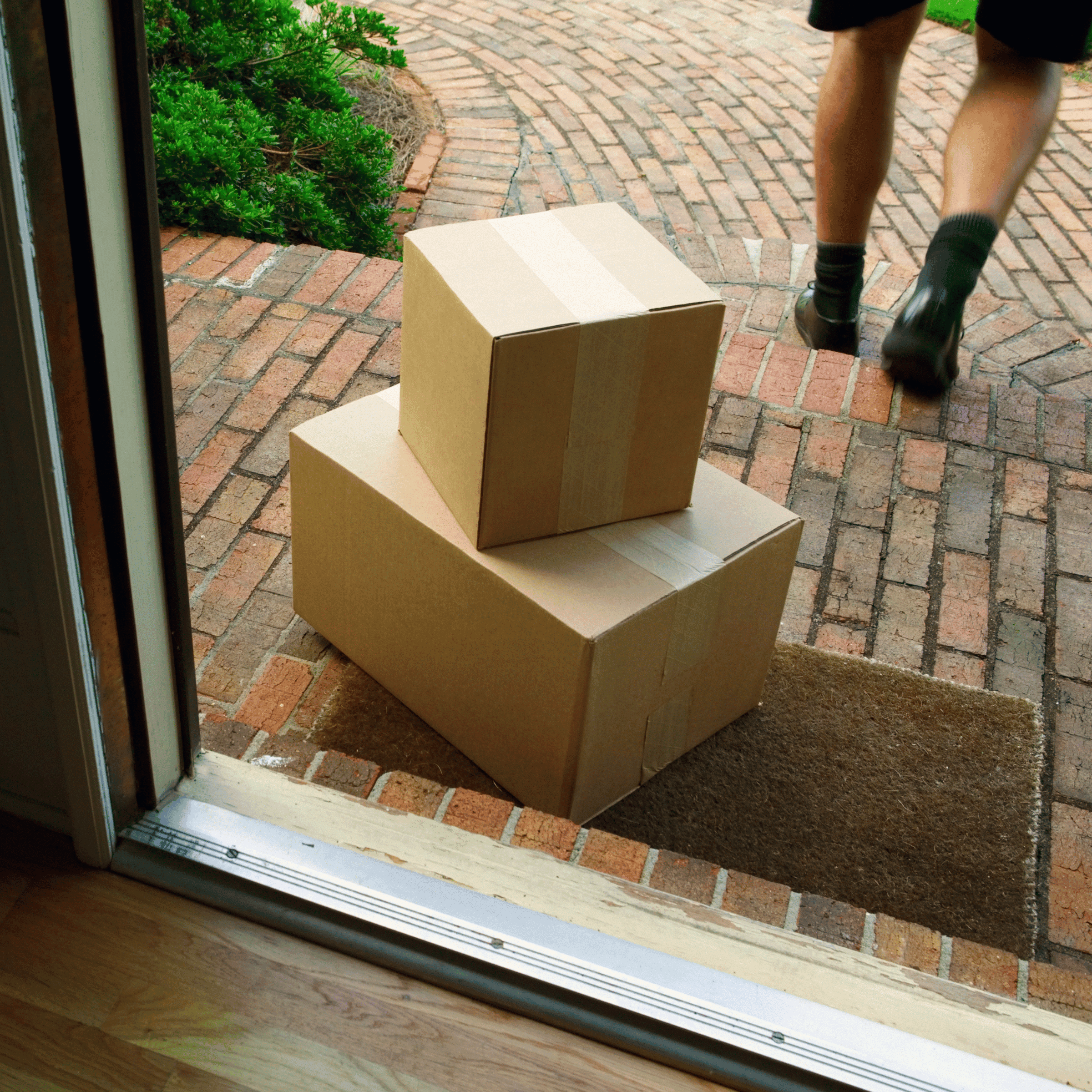3PL data is more than an operational metric—it’s a window into your customers and your inventory health.
Every scan, label, and shipment in your fulfillment network generates insights that can shape how you sell, stock, and scale.
By analyzing your 3PL analytics, ecommerce brands can better understand customer behavior, detect inventory trends, and make smarter, data-driven decisions that improve profitability and retention.
Why 3PL Data Is So Valuable
A modern third-party logistics provider doesn’t just store and ship products—it captures a continuous flow of real-world data across your supply chain.
This data links operational performance to customer experience, revealing what drives conversions, repeat orders, and brand loyalty.
Key benefits of 3PL data:
- Full supply chain visibility: Real-time tracking from inbound receiving to final delivery.
- Omnichannel insights: Centralized data from DTC, marketplace, wholesale, and retail channels.
- SKU-level accuracy: Exact records of what ships, where it ships, and when.
- Performance benchmarking: Pick/pack times, order accuracy, and carrier reliability.
- Returns and quality control: Data on product condition, reason codes, and preventable damage.
When integrated properly, this information helps brands align fulfillment, marketing, and procurement around a single source of truth.
The 3PL Data Every Brand Should Be Tracking
To unlock actionable insights, make sure your 3PL provides access to the following data sets:
- Order Data: Order sources, SKUs, values, and ship-by times.
- Inventory Data: On-hand stock, available-to-promise (ATP), backorders, and dwell time.
- Warehouse Metrics: Pick accuracy, QC exceptions, kitting activity, and relabel events.
- Returns Data: Return reason codes, condition status, and restockable percentages.
- Shipping Data: Carrier service levels, zone performance, and delivery time metrics.
Each of these data points connects fulfillment performance directly to customer satisfaction and profitability.

What 3PL Data Reveals About Customer Behavior
1. Repeat Purchase Behavior
3PL data shows how delivery speed and order accuracy impact repeat purchasing.
Brands that maintain fast, reliable shipping often see a 10–15% higher repeat rate, proving that fulfillment quality directly drives loyalty.
Action: Use this data to justify faster service levels in high-performing ZIP codes or introduce loyalty programs tied to delivery experience.
2. Product Pairing and Bundling
Pick lists and order histories reveal frequently bought-together SKUs, making it easier to create bundles that boost average order value (AOV) and speed up fulfillment.
Example: If serum and moisturizer SKUs are picked together 40% of the time, pre-kit them for faster throughput and higher AOV.
3. Returns and Product Feedback
Every return tells a story. Tracking return reason codes, packaging types, and carrier data can help identify patterns in damaged or unsellable inventory.
Action: Update packaging materials or adjust carrier mix to reduce preventable returns and improve the post-purchase experience.
4. Channel and Delivery Optimization
3PL data helps brands measure how different channels respond to delivery speeds.
For example, DTC shoppers may demand 2-day delivery, while wholesale or marketplace buyers are fine with 5-day ground.
Action: Match delivery promises to each channel’s tolerance for speed and cost.

What 3PL Data Reveals About Inventory Trends
1. ABC/XYZ Segmentation
3PL inventory reports let you classify products by revenue impact (ABC) and demand stability (XYZ):
- AX: High revenue, consistent demand — store across multiple nodes.
- AY: High revenue, seasonal — build safety stock before peaks.
- BZ/CZ: Low velocity, erratic demand — centralize or discontinue.
This ensures your warehouse space and capital are always working efficiently.
2. Demand Forecasting and Replenishment
3PL data offers real-time demand signals through pick frequency, inbound ASNs, and backorder rates.
Monitoring these trends enables proactive replenishment and better forecasting accuracy.
Action: Combine fulfillment data with marketing and campaign activity to anticipate order surges.
3. Stockout and Lost Sales Analysis
Tracking stockouts at the SKU level reveals how much revenue is lost per hour or day of unavailability.
Action: Set automated reorder triggers when ATP falls below minimum thresholds to prevent backorders and missed opportunities.
4. Multi-Node Fulfillment Optimization
3PL analytics show where customers are located, helping brands position inventory closer to demand.
Strategically placing top sellers across multiple fulfillment centers reduces shipping costs and increases conversion rates.
Action: Use shipping zone and delivery data to maintain 2-day delivery coverage for at least 90% of your orders.
Essential KPIs to Measure
To turn 3PL data into insight, monitor these key metrics consistently:
- Perfect Order Rate: % of orders shipped on time, accurately, and damage-free.
- Fill Rate: Shipped ÷ Ordered (by line, unit, and channel).
- Dock-to-Stock Time: Time from receipt to available inventory.
- Pick-to-Ship Time: Internal warehouse efficiency.
- Return Rate: % of orders returned, segmented by reason.
- Forecast Error (MAPE): Difference between predicted and actual demand.
- Cost-to-Serve: Fulfillment + shipping cost per order or channel.
Tracking these metrics links fulfillment performance to customer satisfaction and long-term revenue growth.
Turning 3PL Data into Strategy
When ecommerce brands integrate 3PL data into their business operations, the results are transformative.
It allows every department to make informed, proactive decisions:
- Marketing: Identify how shipping times affect conversion and retention.
- Operations: Forecast labor and capacity around seasonal demand spikes.
- Finance: Monitor profitability by SKU, channel, and shipping zone.
- Procurement: Adjust reorder timing and vendor planning based on real consumption.
By aligning teams around shared fulfillment analytics, brands can scale faster, reduce waste, and deliver a more consistent customer experience.

Avoiding Common 3PL Data Mistakes
Even the best data is useless without accuracy and alignment. Avoid these pitfalls:
- Focusing only on order-level fill rates instead of SKU-level accuracy.
- Using averages instead of percentile metrics for performance tracking.
- Relying on weekly reports instead of real-time API updates.
- Inconsistent SKU and PO identifiers across systems.
- Ignoring return reason standardization, leading to poor insight quality.
Clean, unified data ensures your analytics actually lead to better decisions.
Why Leading Brands Invest in Fulfillment Analytics
Top-performing ecommerce brands use 3PL analytics to create a measurable competitive edge.
With real-time visibility across fulfillment and inventory, they can:
- Forecast demand with precision.
- Lower shipping costs by optimizing node placement.
- Reduce returns and damages through packaging and carrier insights.
- Increase repeat orders through faster, reliable delivery.
When your 3PL acts as both a logistics partner and a data partner, every shipment becomes a learning opportunity—and every data point becomes a growth driver.

Ready to Turn Your Data Into Growth?
Contact Us





